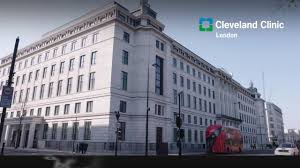Robotic and open inguinal hernia repairs.
Over my consultant career which has now spanned 25 years I have had the opportunity to learn inguinal hernia repairs by a number of techniques as the science and technology has evolved. The traditional technique of open repair was dramatically improved in the 1980s with the introduction of mesh repairs for all patients with hernias instead of the traditional sutured repair. This has reduced the recurrence rate and also allowed the use of very small incisions and this remains a widely used and very safe procedure. I remain happy to do this surgery which is still done in around 40% of hernia repairs in the USA (August 2025). Healing is reliable and normal activities usually can resume at around 2 weeks after surgery. Most patients notice an ache in the site for around a week after the surgery although this can be modified with simple or more complex painkillers. This technique uses prolene flat mesh which has been widely adopted and is regarded as fully safe by medical experts.
Since the 1990s when the technology of looking inside the abdomen with telescopes first became available, many surgeons changed to placing a mesh on the inside of the abdominal cavity either acutally within the abdomen or in a pouch outside of the membrane lining the cavity. The recurrence rate from this type of repair was quite high and I never adopted it with great enthusiasm particularly as it was very difficult to close the peritoneum neatly using this technology due to physical limitations with the equipment and telescopes. More recently in the last couple of years I started again to do this surgery with the introduction of shaped meshes which I believe go some way to minimizing the recurrence rates; especially for women and for patients with hernias on both sides. In the US this technique accounts for around 10% of hernia repairs.
The Da Vinci Robot systems have been in production for quite a few years but their widespread introduction in the US and Europe has made them available for use in abdominal wall surgery. This system has the enormous advantage of superb optics allowing very accurate dissection of the groin from within the abdominal cavity minimizing the risk of damage to nerves, vessels and the other cord structures. In addition the highly mobile and super-articulated instruments enable very accurate dissection and fixation of the biodimensional mesh in place. The abdominal wall lining can then easily be closed with a suture which entirely covers the mesh and minimizes the risk of the bowel sticking to the mesh, a rare but dreaded complication in conventional laparoscopic surgery. It is being widey adopted in the US and in Europe. It is now my preferred technique. Other robot manufacturers are now making simpler systems which are highly suitable for such a type of surgery and it is hoped that this will mean the cost, which is delaying the adoption of this technology both in the NHS and in private, will come down and it becomes more widely available.
This form of treatment of inguinal, femoral and umbilical hernias and abdominal wall reconstruction is available at the Cleveland Clinic London for self pay and some insured patients. Do not hesitate to contact us if this is something of interest to you which can be done as a day-case.

